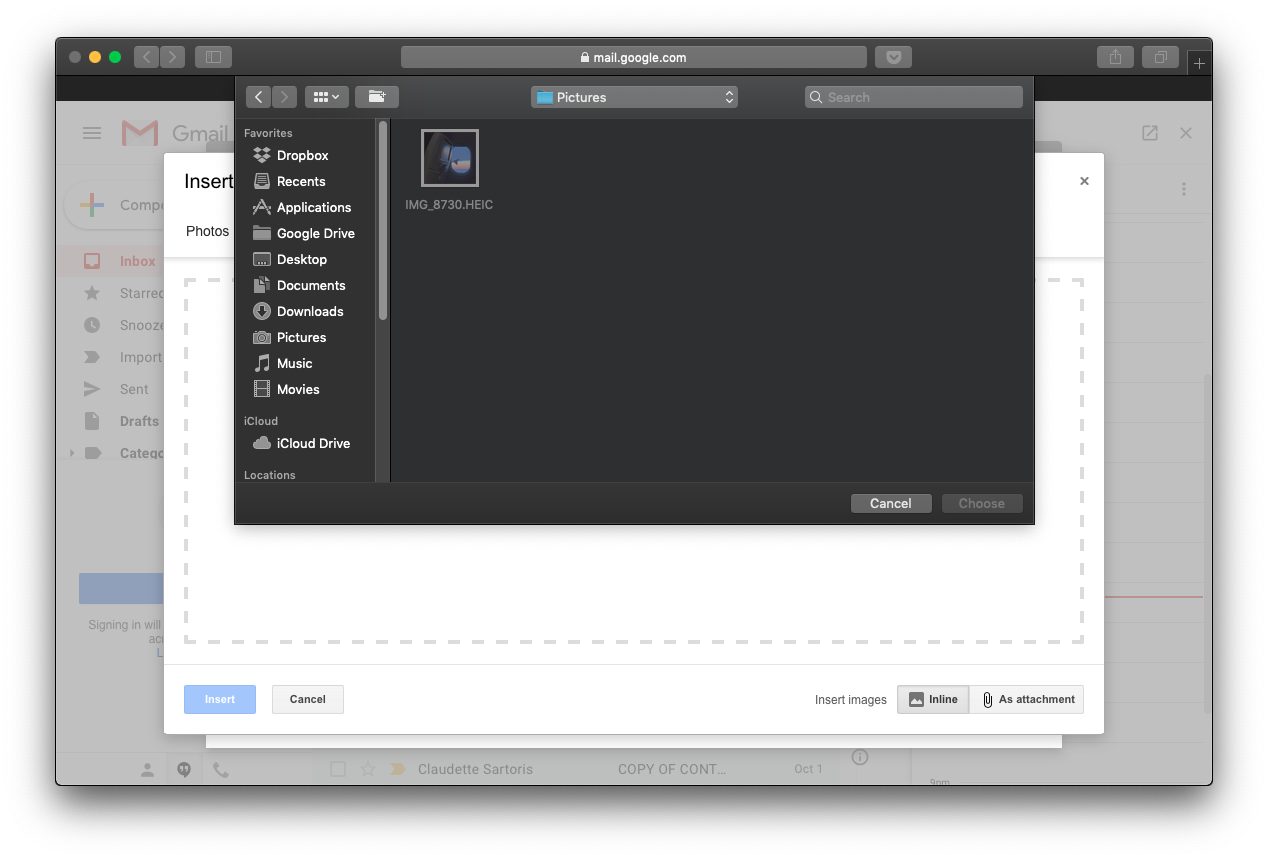The iOS/macOS Photo Sharing Situation is Weird 23:09, Oct 21, 2018
HEIF might be good technology, but the current implementation needs work.
If all of your Apple devices are running the latest software right now, when you AirDrop a photo taken on your iPhone to your Mac, you might find that instead of getting a normal JPEG image (.JPG) from your phone, you end up with a HEIF file (.HEIC), the more advanced but less widely compatible image format Apple added in iOS 11.
Supposedly, Apple solves the compatibility problem by automatically converting your HEIF images to JPEGs any time you share them. For example, if you drag that HEIF image into Mail, it is converted into a JPEG automatically.
This all sounds great until you are composing an email on a web client and want to upload a photo, upon which most image uploaders will simply not let you upload a HEIF file.

The Gmail web client does not let you attach HEIF images directly.
There are solutions, but none of them are obvious (Apple's support page doesn't offer much help for photos already taken in the HEIF format other than asking you to update to most recent OSes). I have to wonder, do Apple people really test out how this kind of stuff work for normal computer users, i.e. those who don't use Apple software exclusively or (gasp!) Windows users?
If Apple favors proprietary solutions (e.g. the W1 chip in their headphones) or standards that are arguably ahead of their time (HEIF, USB-C) and are aggressive about pushing them at the expense of what is working fine right now, they ought to do the work to expand the ecosystem to make their standards more usable in the transition phase. Open up the W1 chip, disguise HEIF files as JEPG files for open/save dialogs (at least in Safari!) and make good USB-C accessories. Unlike the iPhone and Flash situation Apple is neither the dominant player nor clearly ahead of the industry in these areas; a similar level courage (ahem) here only translate to ignorance of real problems for their own users.
Look at the USB-C situation and I see a common theme here.
(Actually, if Apple had walked the walk and changed the iPhone, their most influential product, to USB-C, that ecosystem might have been in much better shape.)